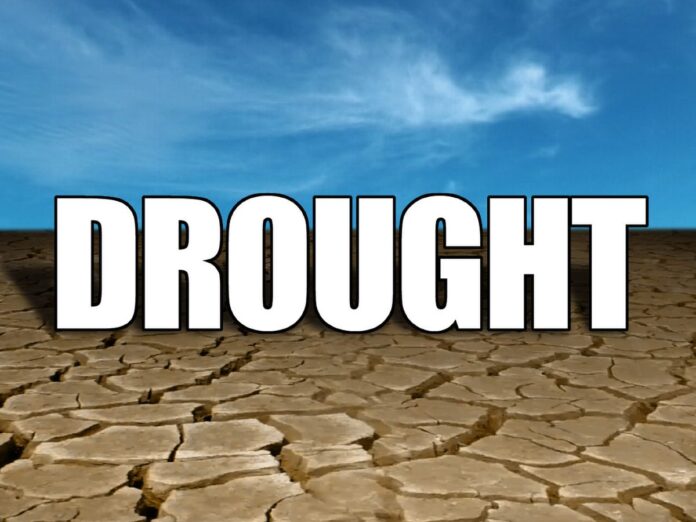The severe drought that gripped the Lower Rio Grande Valley virtually the entire month of May was, as of Monday morning, on the verge of being washed away, coincidentally on the first day of Atlantic hurricane season.
That’s according to Barry Goldsmith, warning coordination meteorologist with the National Weather Service Brownsville/Rio Grande Valley, who said meteorologists were confronted with somewhat of a “wild card” in early May, when an early-onset La Canicula pattern left over from late April was scouring the Valley with blasts of hot, dry air and driving temperatures up into record territory. At the same time, several forecast models were suggesting the possibility of rainfall that could help put a dent in the drought, he said.
“The big concern was that it would have to come from a flow pattern in the atmosphere from west to east, which means it would have some difficulty picking up deep tropical moisture to make it really rain good,” Goldsmith said.
The downside was that the flow, if it happened, would be accompanied by damaging winds, large hail and lots copious lightning in addition to rain, though at least it would be raining. It came to pass that from May 7 to May 23, the high-pressure La Canicula pattern — also known as the dog days of summer — flattened enough to allow waves of weather energy to sweep across Texas and provide the necessary lift for lines of thunderstorms originating along the Sierra Madre and in central/west central Texas to move across the ranch country in the southern part of the state and the Upper Valley, Goldsmith said.
Ranch lands in counties like Jim Hogg, Starr and Zapata were well watered, enough to erase the drought, though most of the squall lines fell apart before reaching Cameron County, which continued to be classified in the moderate to severe drought category. An exception was on May 16, when an early morning squall gave the county a thorough soaking.
“That was a great storm,” Goldsmith said. “We needed that rain.”
Plenty of it ran off rather than being absorbed into the ground. Still, plants and lawns turned greener and the rain helped chip away at the drought, though it certainly didn’t end it, he said.
“One line of thunderstorms isn’t going to erase a drought,” Goldsmith said.
Just over the past week, however, La Canicula collapsed completely as slow-moving, upper-level disturbance slid north to south across the state. By the last weekend of May it was centered over north-central Mexico. On the east side of that disturbance was a “deep southerly flow of tropical moisture” and easterly flow near the ground, which resulted in lots of rain across the entire Valley. Most of Cameron County got one to two inches on May 31 and June 1 overnight through mid-morning on Monday, with heavy rain continuing to fall and thunder rattling teacups later in the afternoon. Goldsmith said normal average daily rainfall for here on May 31 and June 1 is .09 inches.
Not all the numbers were in as of yesterday (Sunday), though there was a good chance that as of today the Lower Valley would no longer be in any drought category, Goldsmith said.
“Whatever falls (Monday) goes into the mix,” he said. “As we continue to accumulate rainfall it will determine how much of an improvement we actually get. … It doesn’t mean it’s going to continue, because the event itself is a slow mover and it’s starting to dissipate.”
Just around the corner is more heat and humidity without much rain, though breeze off the Gulf will help fend off dryness — at least for a while, Goldsmith said.
“Uncertainty is the key into (mid-June) as we’ll be watching the Gulf for potential tropical development, as La Canicula struggles to gain full development,” he said.
As for June through August, the forecast is for a higher than 60 percent chance that temperatures will be above average, and less than a 10 percent chance they’ll be below average, Goldsmith said. So far this year, the Valley has racked up the second warmest temperatures since records have been kept. March through May was the Valley’s hottest spring on record, with Brownsville averaging 79.9 degrees, 1.2 degrees above the previous record in 2011. Harlingen averaged 79.5 degrees, or 0.6 degrees above its previous record set in 1953. McAllen averaged 80.5 degrees for spring, barely missing its 80.6 degree record from 2017.




